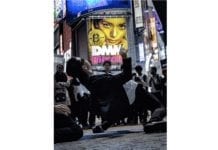We’ve already discussed IBM’s savvy investment in blockchain technology in our previous article Best and worst blockchain stocks for 2018. IBM has been incorporating and innovating blockchain for years and have now launched TrustChain.
This new network uses blockchain’s digital ledger to document the provenance of jewelry, following the supply chain from mine to store.
TrustChain relies on IBM blockchain technology but also includes a consortium of companies involved in the jewelry supply chain such as: Asahi Refining, a precious metals refiner; Helzberg Diamonds retailer; LeachGarner, a precious metals supplier; and The Richline Group, a manufacturer. The project’s security has been enhanced by third-party verification with UL Labs. Jason Kelley, the GM of blockchain services at IBM says alliance members plan to expand.
“What we are announcing and bringing forward has been in the works for some time. It’s the first end-to-end industry capability on blockchain that has its core in trust,” he said to TechCrunch.
TrustChain will allow this host of companies to ensure an item of jewelry has the history and value it is purported to have.
Over the past decades, it has become clear that many standard mining practices involve serious human rights violations such as slavery or fueling of ethnic conflicts. Dubbed “blood diamonds”, many jewelers and their customers avoid these, and TrustChain will help make the designation of “conflict free” verifiable. Research has found consumers are willing to pay more to ensure they can enjoy blood-free bling.
“We have a need in our industry for truth and greater trust,” Kelley told CNet.
The use of blockchain’s digital ledger is a natural fit for monitoring the supply chain of nearly any type of goods in which provenance and quality assurance are key. This includes agricultural products and even cannabis as we touched on in our recent piece New Forecast Calls For An Emerging $10-Trillion Market… and There’s Just One Big Secret To Finding Success In The Runaway Blockchain Trend.
Of course, although it’s very promising, blockchain isn’t a panacea for all the issues that currently plague the jewelry industry. Criminals are crafty and there will be attempts to circumvent security protocols.
Thankfully, TrustChain has a mechanism for users to check the veracity of each transaction on the blockchain along every step of the way.
“If there is a dispute, instead of calling and following back through the process in a more manual way, you can click on a trusted chain, and you’re able to see what happened immediately. That reduces the number of steps in the process, and speeds up what has been a paper-laden and manual effort,” Kelley explained, adding “Now we can share this [data] in a permissioned network and we can be sure it’s accurate,” he said.
The notion of the permissioned blockchain is vital to TrustChain. It means users must be granted permission to participate on the blockchain with everyone else on the blockchain in consensus. “That’s what is exciting with TrustChain. Each point in the supply chain has bought into the consortium,” Kelley elaborates.
He acknowledges that errors could be introduced in any system, whether intentional or not, but he says the beauty of this system is that blockchain is a team sport and many, many eyeballs are acting as a check for each step along the way. If a problem is found, it can be fixed through the same level of consensus.
“The technology is pretty easy,” Kelley says.
“What’s tough is getting the businesses and the business processes, the different players and personalities, together to execute in a single consortium.”
TrustChain has graduated from its pilot stage, but managing the people power involved has been a challange. At Richline alone, more than 100 people from accounting, information technology and business operations were involved in making TrustChain launch.
Most blockchain records involve digital assets which is data that can be recorded directly on a blockchain, most famously in the case of cryptocurrency like bitcoin. Managing physical assets like diamonds, pharmaceuticals, and agricultural goods is far more difficult since the physical item must correctly correspond to its identity on the blockchain. Authentication options are actively being developed and improved upon, though.
Namely, IBM is developing a “molecular watermark in a certain place” on a product, Kelley details.
Naturally, IBM is working night and day on this verification technology as its implications stand to have potential in other sectors. “Blockchain doesn’t solve the original recording of the physical asset,” Kelley conceded. “We can take a picture at molecular level to verify an object is what we think it is. That is then put into the blockchain.”
So while the trust isn’t completely perfect, it is a great improvement on current verification standards used which are not only cumbersome and complicated, but truthfully, not even that reliable and safe from fraud.
If TrustChain keeps moving at its current pace, by this time next year you may be able to use your smart phone to scan a QR code on a diamond.
Allowing you to see a visual of the entire supply chain of the diamond right before your very eyes. Kelley says such an interface is already in the works for the consumer, and not just the industry professionals.
Systems like TrustChain help prove that there are actual viable scalable use cases for blockchain despite the volatility of the cryptocurrency market of late.

















